The Holy Royal Arch not infrequently mystifies Freemasons who progress to this order following being raised to the Third degree.
Having passed three degrees of Craft masonry, the Royal Arch, justly deemed the completion of the Master Mason’s degree, appears a somewhat confusing ceremony that does not teach a clear message, unlike those of the preceding degrees.
Whilst the meaning of Craft Masonry is understood or explained clearly to most brethren as the messages the degrees teach are self-evident, the meaning of the Royal Arch ceremony is not usually discussed in any detail either in or outside of lodge.
An experienced and senior Royal Arch Mason of many decades recently expressed to me, on hearing that the newer Companions did not understand the degree, that the meaning was completely explained in the three lectures, and there was nothing more to learn or understand.
Craft masonry is concerned with our mortal existence; birth, life and death. It inculcates values and morals, through operative symbolism, which are immediately understandable and can be assimilated by the diligent application of the tenets taught therein.
Our duty to our fellow men and brethren, and the respect due to our Great Creator are laid out clearly. The ritual allegory of the Master Mason degree teaches us how to approach the moment of death without fear and with honour.
The Royal Arch is however concerned, not with our mortal life, but with the next, and with our relationship with the Creator.
It contains much symbolism, and a deep understanding of this degree charges us with a clear task, to rediscover the truth regarding the Most High.
The ceremony is highly esoteric, and as many Royal Arch masons do not reflect on the degree, and few brethren are willing to express their perception on the lesson taught by the degree, the impact is frequently far less than those of the preceding degrees.
This paper will examine some of the themes in the Royal Arch, and attempt to show that it exemplifies much esoteric philosophy and symbolism and can be seen as a metaphor of the process of reintegration with the Creator.
The Talmud tells us that;
“Man’s soul is from heaven and his body from earth. The body is the scabbard of the soul”.
The Holy Royal Arch encapsulates and mirrors particular aspects of this. The Master Mason’s degree completed by the Holy Royal Arch can be seen as an allegorical and veiled description of the Fall of Adam Kadmon, the qabalistic first man, and the subsequent reintegration of man into the Light from which he originated, as will be discussed shortly.

Royal Arch is the hexagram, the Seal of Solomon, which unites the heavenly and mundane worlds
IMAGE: the square magazine digital collection
As we study the form, structure, officers and ornaments of the Chapter, many symbolic aspects can be identified, and as I hope to show, the underlying meaning of the Holy Royal Arch degree can be interpreted to show an esoteric philosophy concerning reintegration.
The jewel of the Royal Arch is the hexagram, the Seal of Solomon, which unites the heavenly and mundane worlds, and in itself is a codex for the union of the Microcosm and Macrocosm, two separate and yet identical in nature reflections of each other.
It further can be seen to describe the relationship of the Craft and the Royal Arch. The Craft degrees represent the lower worldly domain, and the Royal Arch, the upper heavenly domain.
Upon the jewel are written the words Nil nisi clavis deest, nothing but the key is wanting. I would suggest that the key is in fact the realisation that the degree is an allegory of the inner search for God within all of us.
Also inscribed is the phrase ‘If thou canst understand this, thou knowest enough’. Whether this refers to the key of the degree, or the meaning buried within is unclear, but can relate equally to each.
The Craft possesses three degrees, ruled by one Master. The Royal Arch conversely has one degree, with three rulers.
Geometrically, these produce two opposing equilateral triangles and likewise two Tau crosses, that in the Craft being inverted and similarly represented by the level. In itself the triangle is a deep qabalistic device, with multiple correspondences and meanings within Masonry, and from Pythagoreanism through Neo-Platonism to Rosicrucianism.
The triangles displayed in the jewel recall the alchemical representations of the elements of water and fire. The whole in combination represent reintegration alchemically by the combined forces of water and fire, putrefaction, in decease, and the union of God and the Universe, again underlining the Oneness of all.

The three sojourners discover the under ground vault in the ruins of the first temple
IMAGE: the square magazine digital collection
The ritual of the Royal Arch describes the discovery, buried within a long-forgotten vault, of the sacred name of God.
The candidate, tasked with clearing a building site discovers an arch of stone (described as a dome in some jurisdictions and rituals), from which he removes the keystone and opens the vault, penetrating the depths until he discovers the word, deposited within.
The ritual describes the response of the candidate when asked what he found as “For the want of Light I am unable to discover”… that Light is the true Key, and is the discovery by the Candidate, through reflection, that God is at the centre of our very being.
The traditional sacred word of the Royal Arch can be seen to be a philological metaphor of the unity of the Great Creator. Prior to the changes imposed by the Supreme Grand Chapter of England in 1989 in response to strong media and Church pressure, and still in use in other jurisdictions worldwide, one of the sacred words was a synthetic and syncretic threefold glyph for the name of God.
This compound word unites the name of God from three different belief systems, and underlines the belief that there is but One Light, manifested in myriad ways and perceived differently by different groups of mankind, but arising from a single source. The word can therefore be seen as a metaphor for the unity of the Light and the One.
The other (and under the UGLE presently the only) Judaeo-Christian sacred word is used in Gnostic belief systems to represent the same unifying and unitising principle of the One True Light.
The allegory of the Royal Arch degree is therefore the inner discovery of that which was lost previously. The goal of restoration and reintegration is predicated by the concept of the Fall of Man from grace, the loss of synergy with the One and the undoing of his spirit which must be counteracted by own internal search for the truth within us.
One common doctrine of eschatology states that in the End all will come back to the Beginning. Reintegration will restore that which is lost.
The Masonic and Royal Arch allegory tell us that the genuine secrets of the Master Builder were lost by the untimely death of Hiram Abiff, and that in the Royal Arch we will rediscover the genuine secret, namely the name of God.
The Royal Arch can thus be seen as the discovery, deep within each of us, of the One True Light; that the Christ Consciousness can be found within ourselves through our labour.
Job 19:26 says ‘in my flesh I shall see God’. The candidate becomes the apotheosis of mankind, discovering the Divine within and restoring himself to his original state.
In the Royal Arch story the three Sojourners belong to a tribe that fell from grace; the captivity in Babylon shows a parallel to the fall of Adam Kadmon, from freedom and liberty in light to enslavement and darkness in servitude.
In the Holy Royal Arch degree the sojourners regain their former status; namely through their discovery they experience Reintegration.
In Haggai 2:3-9 the Lord asks of the Jews who had seen this house (of God) in its former glory, and how it seems now as nothing.
But that the glory to come will eclipse the former. The whole of Haggai may be viewed as a metaphor for the fall of Man and the prophecy of Reintegration into Unity.
In the traditional Scottish version of the Royal Arch, the arch is depicted as being supported by two pillars, united by the keystone of the Mark Master Mason degree and subsequently constructed during the Most Excellent Master degree.
These pillars not only represent those described in Craft masonry, but also the two opposing pillars of kabbalistic dualism.
God found within is further symbolised by the figure of a point within a circle, bounded by two parallel lines; the point of Unity within the whole of Existence, and the One True Religion within the sphere encompassing all forms of worship, juxtaposed by the two lines representing the antagonistic forms of nature and the dualism of opposites.
The Point within a Circle is the Unity Principle within the centre of Eternity, and has the numerical value of 10, representing Reintegration.
As a minor diversion it is useful to acknowledge that this is a symbol of great antiquity, being first described by the cosmology of the Pythagorean philosopher Philolaus in the 5th century BCE as relating to the Limited (or point of focus) within the Limitless.
This was the first historically recorded non-geocentric view of the world, and Philolaus posited the existence of a central great fire or light around which everything harmonised.

Supernal Triad of the Tree of Life
IMAGE: the square magazine digital collection
The Three Principals of the Chapter likewise are a further expression of the Triune expression of Light, as the triumvirate rule as one, each having distinct and separate characters; one representing the law, one knowledge and the last worship.
This has a distinct qabalistic formula, 3=1, and in Pythagorean teaching, the number three is the first with substance, the first geometric figure and that which signifies manifestation.
In addition, the three Principals can also be seen as representative of the Supernal Triad of the Tree of Life, representing Kether (the Crown of Mercy), Binah (Wisdom) & Chokmah (Intuitive Understanding).
In themselves they represent the manifest God in existence, and that part of development that is reached only once an individual has crossed the Abyss and sublimated the ego.
The particular position of each Principal varies between Grand Chapters, with the High Priest the supreme ruler in some and the King in others.
The three Principals, assisted by the three Sojourners and the three accessory officers, represent the union of the three Taus, summating to 9, the Nonery, a limited view of the Creators Great Work.
Further, the 3x3x3 configuration describes the chapter as a triangle, the sacred symbol of the degree. With the addition of the Janitor, we complete the Chapter, and reach the Pythagorean number 10, standing for Reabsorbtion into the Absolute and the Return to Unity, the number both of Earth and Malkuth, the final expression and emanation of God according to qabalistic teaching.
Additionally, the arrangement of chapter officers implies a vaulted chamber, with the three principals and sojourners describing the curved roof and the scribes the pillars supporting the same.
The twelve banners within the vault can be theorised to emblematically represent the pillars as above, and further the resultant from the multiplication of the quaternary by the ternary.
The letters on the plate include further symbolism not immediately apparent. In jurisdictions that still use both Sacred Words these are displayed on the plate in syllabic triads.
Joined with these are the Hebrew letters Aleph, Beth and Lamed, which have qabalistic values of 1, 2 and 30, summating to 33, which has a number of esoteric references as well as reducing to 6, the union of the points of the triangle.
Three sets of three syllables recreate the ninefold symbolism mentioned previously.
The encircled triangle of the royal Arch can furthermore be seen to unite the triangle of the material and spiritual worlds enclosed by the symbol of the Ouroubus, such that all is contained within the Omneity, again reiterating the qabalistic formula 1=3.
The Triple Tau, as a single figure incorporates 8 squares (the Cosmic Christ and Universal Harmony), the number of the banners and officers in a chapter summate to 26 (12+5+9; the qabalistic value of the Tetragrammaton, IHVH), such that the Triple Tau and the form of the Chapter precisely reproduce the formula of 1=8=26.

the Triple Tau, as a single figure incorporates 8 squares
IMAGE: the square magazine collection
Traditional teaching states that the Triple Tau at one point in the development of the degree may have represented a T over an H, standing for Templum Hieronysum, the Temple of Solomon. Tau has a Qabalistic value of 400, and Cheth of 8, producing 408.
By reduction this produces 12 (the Whole of Creation, Omneity; and the twelve Banners in the Royal Arch), and subsequently 3, the sacred number of the degree.
The Triple Tau can thus be seen as a further representation of the Universe, and both visually and through Gematria restates the formula of 1=3.
Within the Qabalah itself, Tau represents the Light shining forth from Darkness and the Ultimate Origin as the final letter of the word of Creation; whilst Cheth is the essential Unity with God.
The Triple Tau in a T over H form can hence be seen to crystallise the meaning of the degree as Light leading to Unity with God.
The device of an inverted triangle within a larger apex up triangle, usually created by the arrangement of the candles in the Chapter acts a homologue of the Pythagorean tetractys by encompassing the numbers 1 to 6, 8, 9 and 12.
The principal banners, namely those of the tribes of Reuben, Judah, Ephraim and Dan, represented by the Man, the Lion, the Ox and the Eagle arise from the vision of Ezekiel.
They can be qabalistically attributed to the four fundamental elements, Earth, Fire, Water & Air and are conjoined with the Triple Tau which may also be represented by Shin, the Hebrew letter denoting Spirit and in itself a pictogram containing three taus.
The qabalistic values of these summate to 10 + 6 + 4 + 6 +300=326 the Pentagrammaton IHShVH, the Tetragrammaton joined by the Son.
The twelve banners marshalled either side of the floorcloth can be seen to represent six pairs of pillars, supporting the arch of the vault; and inferring the whole of creation surrounding the centre as twelve is the number of the universe; again representative of the Pythagorean point within the circle.
The borders of the apron and sash of companions and principals reproduce alternating triangles which can be posited to further reiterate the union of the celestial and terrestrial triangles of the degree.
One can also see within the apron the triangular flap within the square of the apron, the Ternary within the Quaternary.
The Signs of Penitence and Reverence very clearly refer to the destruction of the ego, to the removal of all self-absorbed thought and the quietening of the mind, and to listen to our heart. This is the true Mors Janua Vitae, that death is the gateway to life.
Still further, the allegorical descent into the vault by the exaltee to receive the One Truth can be seen as isolation from the rest of mankind.
It can be thus considered by this analysis that the Royal Arch succinctly synthesises a dramatic allegory for the journey of Reintegration; that the symbolism in the degree mirrors that posited by Pythagorean sacred geometry and Gnostic theology and in one degree the whole of the journey is encompassed.
As Laurence Dermott wrote, the Royal Arch is the root, heart and marrow of Masonry; and the maxim that the Royal Arch is but the completion of the Master Mason’s degree, the eschatological goal of life is forcibly underlined.
Footnotes
References
1) Martinism. History and Doctrine. Robert Ambelain. 1946. Trans. P. Vaughan. 2002
2) The 4th degree in the Craft. Yasha Beresiner. Pietre Stones Review. 2012.
3) That which was Lost. Philalethes. MI Budkofsky. 1982.
4) The Relationship between the Craft and the Royal Arch. Harry Carr. AQC 86. 1973.
5) Historical Analysis of the Holy Royal Arch Ritual. F de P Castells. 1929
6) The Handbook of the Chapter. T Caswell. 1876
7) Brothers from another Mother. The historical connection between Martinism and Freemasonry. Kevin Davis. Georgia Lodge of Research, May 2014
8) Mistery of the Royal Arch. Gavin Domenic. Masonic Square 32, 2006.
9) The Triple Tau. GS Draffen. 1956
10) Access to Western Esotericism. Antoine Faivre. 1994.
11) Symbolism of the Rosy Cross. Matt DA Fletcher. 1994.
12) Freemasonry and Esoteric Movements. RA Gilbert
13) Lost Word and Substituted Words. Rene Guenon. La Gnose. 1911.
14) Gnosis and Freemasonry. Rene Guenon. La Gnose. 1910.
15) Beyond Enlightenment; Occultism and Politics in Modern France. David Harvey. 2005.
16) The Mystery of the Royal Arch Word. Art de Hoyos. Heredom vol. 2, 1993.
17) Secrets of Enoch in the Masonic Tradition. Art de Hoyos. Scottish Rite 2013.
18) Royal Arch Working Explained. Herbert Inman. 1933.
19) The paradise myth in eighteenth-century Russia : utopian patterns in early secular Russian literature and culture. Stephen Lessing Baehr. 1991
20) The Key of Solomon. Philosophie Occulte. Eliphas Levi.
21) The Scottish Royal Arch. Thomas Smith Webb Chapter of Research Transactions 2010. Grant MacLeod.
22) Kabbalah & Freemasonry. W. Kirk MacNulty. 1999
23) Neo-Platonism and the Royal Arch Triple Tau. W. Kirk MacNulty. 2004
24) The Mysticism of the Royal Arch. CR Manasseh.
25) The Royal Arch Jewel. AD Matthews. 2009.
26) The Platonic Bodies and the Royal Arch Breast Jewel. H Mendoza. AQC 86.1973
27) The Ensigns of the Twelve Tribes of Israel. Harry Mendoza. 1989.
28) In search of that which was lost. Duncan Moore. 2013
29) The Holy Royal Arch of Jerusalem. Giles CH Nullins.
30) Oringins of the Royal Arch Order of Masonry. G Oliver. 1867.
31) Freemasons Royal Arch Guide. EE Ogilvie & HA Thompson. 1988.
32) The Qabalah, Secret Tradition of the West. Papus. 1892
33) Capitular degrees. 4th Lecture. Masonic Voice Review. Vol.28. ATC Pierson.1863.
34) Reflections on the Holy Royal Arch. Frederick A. Shade. 1978
35) The Natural Table. L.C. de Saint-Martin
36) Of Errors and Truth. L.C. de Saint-Martin
37) The Holy Royal Arch. Dormer Masonic Study Circle paper 155. EH Shackleton. 1950.
38) The Book of Chapter. The Holy & Mystic Royal Arch. Michael J. Stayt. 2001.
39) The Holy Royal Ark, Piers Vaughan. 2003.
40) Early Ritual of the Holy Royal Arch. Thomas Smith Webb Chapter of Research, 2004. Piers A. Vaughan.
41) St Martin, the French Mystic and the story of modern Martinism. AE Waite.
42) The Symbols on the RA Principal Banners. RA Wells. AQC 82.1969
43) Royal Arch Matters. RA Wells. 1984.
44) Ritual of the Holy Royal Arch as taught by the Domatic Chapter of Instruction. Compil. RA Wells. 1989.
45) Sefer Yetzirah. Trans. W Westcott. 1887
46) The Meaning of Masonry, by W.L. Wilmshurst
Article by: Matt D.A. Fletcher
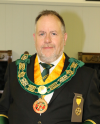
Matt DA Fletcher is the Sovereign Grand Master of the Allied Masonic Degrees of Canada; the Director-General of Studies of the Societas Rosicruciana in Anglia as well as Chief Adept for the SRIA Province of British Columbia & Yukon; is a past Grand Superintendent of the Supreme Grand Chapter of Royal Arch Masons of British Columbia & Yukon; and is or has been a member of almost every regular masonic body in current existence.
Initiated into the Three Pillars Lodge No.4923 in London, and a mason for almost 30 years, he is a subscribing member of bodies in the UK, Canada, the US, Brazil, Belgium & France. He also holds senior positions in a number of Martinist orders and bodies, and is deeply involved in the esoteric avenues beyond regular Freemasonry.
His primary objective is to increase the academic content within Freemasonry, such that we can practically expand and apply the knowledge that we learn in the Craft, and engage with and assist our Brethren more fully on their own personal masonic journey.
In the mundane world, he is a practising orthopaedic surgeon in rural Canada with a strong background in surgical research, and has published and presented over 350 academic and esoteric papers, chapters, and books.
Recent Articles: Esoteric Masonry
 Explore the multifaceted concept of the Divine across various cultural and religious perspectives. Delve into the intriguing deliberations on the Great Architect, Demiurge, and their roles in shaping our understanding of the cosmos, blending philosophical, theological, and metaphysical insights into a rich tapestry of human spirituality. |
 Unveiling the Mysteries: Explore the Enigmatic World of Rosicrucianism! Dive into the fascinating origins and teachings of the Rosicrucian tradition, shaped by the mythical figure Christian Rosenkreuz. Discover the secrets of alchemy, spiritual transformation, and esoteric knowledge. Unlock the hidden wisdom that has captivated seekers for centuries. Unleash your inner mystic today! |
 An Esoteric Interpretation of the Holy Royal Arch Delving into the profound mysteries of the Holy Royal Arch, Matt DA Fletcher offers an esoteric interpretation that challenges the conventional understanding of Freemasonry. While Craft Masonry is clear in its teachings, the Royal Arch remains an enigma for many. Fletcher's exploration uncovers the symbolic and philosophical depths of this degree, revealing its significance in the Mason's journey towards reintegration with the Creator. |
 Stoicism, Freemasonry, and the Modern Man Discover how the ancient wisdom of Stoicism can enrich Freemasonry and modern life. Dr. Chacón-Lozsán Francisco M.˙.M.˙. explores Stoic principles like virtue, resilience, and inner peace, offering practical insights for today's challenges. Learn how these timeless teachings can foster personal growth, ethical conduct, and emotional stability. |
 Explore the evolution of Masonic rites with the Universal Rite, a modern adaptation of the Ancient and Accepted Scottish Rite. Discover how it integrates contemporary principles, promotes intercultural dialogue, and ensures the timeless values of Freemasonry remain relevant in today's world. |
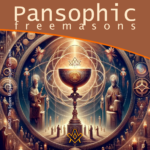 Unveil the secrets of Pansophic Freemasonry, a transformative journey through the ancient mystical traditions. Delve into the sacred realms of Rosicrucianism, Templar wisdom, Kabbalah, Gnosticism, and more. Discover the Graal, the sacred Grail that connects all esoteric paths. Embrace a holistic spiritual quest that reveals the profound mysteries of self and the universe. |
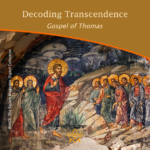 Dive into a spiritual journey where self-awareness is the key to enlightenment. The Gospel of Thomas and Masonic teachings converge on the profound truth that the path to transcendent wisdom lies within us. Embrace a diversified understanding of spirituality, emphasizing introspection as the gateway to a universally respected enlightenment. Explore, understand, transcend. |
 Philosophy the Science of Estimating Values Philosophy is the science of estimating values. The superiority of any state or substance over another is determined by philosophy. By assigning a position of primary importance to what remains when all that is secondary has been removed, philosophy thus becomes the true index of priority or emphasis in the realm of speculative thought. The mission of philosophy a priori is to establish the relation of manifested things to their invisible ultimate cause or nature. |
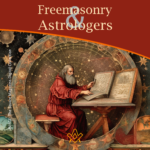 Unlocking the Mysteries: The Surprising Connection Between Freemasonry and Astrologers Revealed! Delve into the intriguing world of Freemasonry and explore its ties to astrological practices. Discover how these two distinct realms intersect, offering a fascinating glimpse into the esoteric interests of some Freemasons. Uncover the hidden links and unravel the enigmatic bond between Freemasonry and astrologers! |
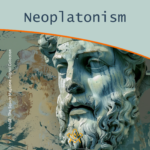 Neoplatonism, a philosophy with profound influence from the 3rd to the 6th century, merges Platonic ideals with Eastern thought, shaping Western and Middle-Eastern philosophy for two millennia. It emphasizes the unity of the individual with the supreme 'One', blending philosophy with theology and impacting major religious and philosophical movements, including Christianity and Islam. |
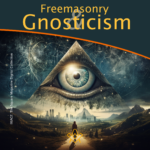 The enigmatic allure of Freemasonry's ancient rituals and Gnosticism's search for hidden knowledge capture the human spirit's endless quest for enlightenment. Between the stonemason's square and the Gnostic's divine spark lies a tantalizing intersection of philosophy, spirituality, and the pursuit of esoteric wisdom. Both traditions beckon with the promise of deeper understanding and moral elevation, inviting those who are drawn to unravel the tapestries of symbols and allegories. Whether through the fellowship of the lodge or the introspective journey of the soul, the paths of Freemasonry and Gnosticism represent a yearning to connect with something greater than ourselves—an impulse as old as time and as compelling as the mysteries they guard. |
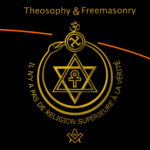 Embark on a journey through time and spirituality with our in-depth exploration of the Theosophical Society's Seal. This ancient emblem, rich with symbols, bridges humanity with the cosmos, echoing through the world's great faiths and diverse cultures. Our paper delves into the six mystical symbols, untangling their profound meanings and tracing their presence in historic art worldwide. Unaffiliated with worldly movements, these symbols open a window to esoteric wisdom. We also probe potential parallels with Freemasonry, seeking threads that might connect these storied organizations. Join us in unveiling the universal language of the spirit encoded within this enigmatic Seal. |
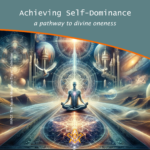 Discover the pathway to divine oneness through the concept of self-dominance. This thought-provoking essay explores the profound connection between self-control, spiritual growth, and achieving unity with the divine essence. With an interdisciplinary approach, it offers practical steps towards expanding consciousness and deepening our understanding of the divine. |
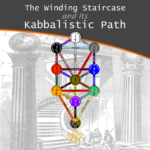 The Winding Staircase and its Kabbalistic Path The Winding Staircase in freemasonry is a renowned symbol of enlightenment. In this article, we explore its connection to Kabbalistic thought and how it mirrors the inner growth of a candidate as he progresses throughout his Masonic journey. From faith and discipline in Binah, to strength and discernment in Geburah, and finally to victory and emotional intuition in Netzach, each step represents a crucial aspect of personal development. Join us as we delve into the esoteric meanings of this powerful symbol. |
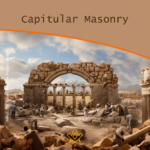 Unravel the mystic origins of Capitular Masonry, a secretive Freemasonry branch. Explore its evolution, symbolic degrees, and the Royal Arch's mysteries. Discover the Keystone's significance in this enlightening journey through Masonic wisdom, culminating in the ethereal Holy Royal Arch. |
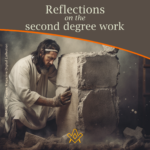 Reflections on the Second Degree Work Bro. Draško Miletić offers his reflections on his Second Degree Work – using metaphor, allegory and symbolism to understand the challenges we face as a Fellow Craft Mason to perfect the rough ashlar. |
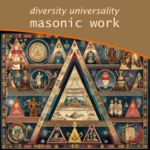 Diversity and Universality of Masonic Work Explore the rich tapestry of Masonic work, a testament to diversity and universality. Uncover its evolution through the 18th century, from the stabilization of Symbolic Freemasonry to the advent of Scottish rite and the birth of Great Continental Rites. Dive into this fascinating journey of Masonic systems, a unique blend of tradition and innovation. Antonio Jorge explores the diversity and universality of Masonic Work |
 Nonsense as a Factor in Soul Growth Although written 100 years ago, this article on retaining humour as a means of self-development and soul growth is as pertinent today as it was then! Let us remember the words of an ancient philosopher who said, when referring to the court jester of a king, “It takes the brightest man in all the land to make the greatest fool.” |
 Freemasonry: The Robe of Blue and Gold Three Fates weave this living garment and man himself is the creator of his fates. The triple thread of thought, action, and desire binds him when he enters into the sacred place or seeks admittance to the Lodge, but later this same cord is woven into the wedding garment whose purified folds shroud the sacred spark of his being. - Manly P Hall |
 By such a prudent and well regulated course of discipline as may best conduce to the preservation of your corporal and metal faculties in the fullest energy, thereby enabling you to exercise those talents wherewith god has blessed you to his glory and the welfare of your fellow creatures. |
 Jacob Ernst's 1870 treatise on the Philosophy of Freemasonry - The theory of Freemasonry is based upon the practice of virtuous principles, inculcating the highest standard of moral excellence. |
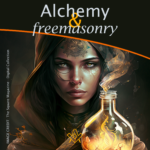 Alchemy, like Freemasonry, has two aspects, material and spiritual; the lower aspect being looked upon by initiates as symbolic of the higher. “Gold” is used as a symbol of perfection and the earlier traces of Alchemy are philosophical. A Lecture read before the Albert Edward Rose Croix Chapter No. 87 in 1949. by Ill. Bro. S. H. Perry 32° |
 The spirit of the Renaissance is long gone and today's globalized and hesitant man, no matter ideology and confession, is the one that is deprived of resoluteness, of decision making, the one whose opinion doesn't matter. Article by Draško Miletić, |
 A Mason's Work in the First Degree Every Mason's experiences are unique - here writer and artist Draško Miletić shares insights from his First Degree Work. |
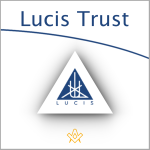 Initiation and the Lucis Trust The approach of the Lucis Trust to initiation may differ slightly to other Western Esoteric systems and Freemasonry, but the foundation of training for the neophyte to build good moral character and act in useful service to humanity is universal. |
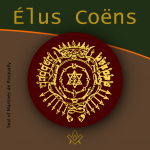 Who were the mysterious 18th century Élus Coëns – a.k.a The Order of Knight-Masons Elect Priests of the Universe – and why did they influence so many other esoteric and para-Masonic Orders? |
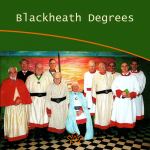 Bro. Chris Hatton gives us his personal reflections on the history of the 'house at Blackheath and the Blackheath Orders', in this wonderful tribute to Andrew Stephenson, a remarkable man and Mason. |
 Book Review - Cagliostro the Unknown Master The book review of the Cagliostro the Unknown Master, by the Editor of the book |
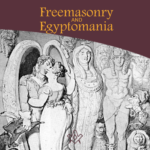 We explore fascinating and somewhat contentious historical interpretations that Freemasonry originated in ancient Egypt. |
 Is Freemasonry esoteric? Yes, no, maybe! |
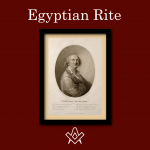 Egyptian Freemasonry, founder Cagliostro was famed throughout eighteenth century Europe for his reputation as a healer and alchemist |
masonic knowledge
to be a better citizen of the world
share the square with two brothers

click image to open email app on mobile device






